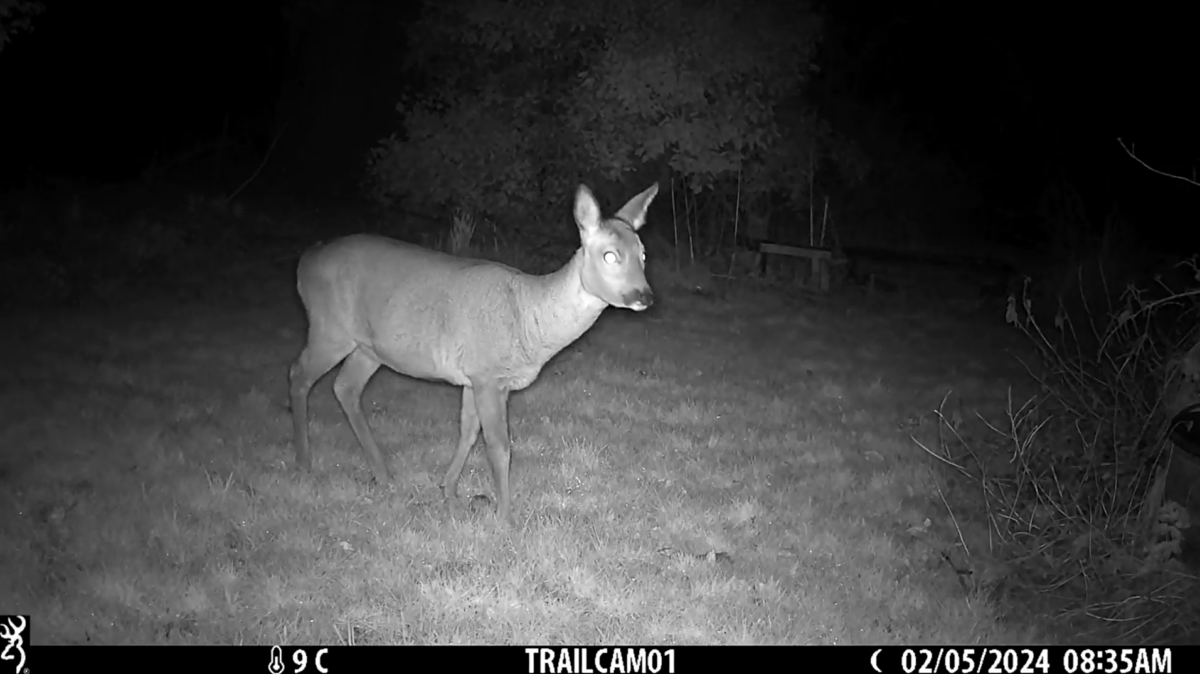Although widely used by ecologists, trail cameras are popular with naturalists, wildlife watchers and those who are simply curious as to what creatures can be found in their gardens. They allow us to monitor the wildlife around us without impacting their natural behaviours and can capture both images and video during the day and night, with the help of infrared imaging technology. Trail cameras are constructed to endure harsh outdoor conditions, including wind, rain and temperature fluctuations, making them robust and long-wearing.
With this technology we can observe wildlife that we may not otherwise be able to see. They allow us to watch easily startled species, like deer, or those that are nocturnal, like foxes. We can also record and observe a much broader, and more natural, range of behaviours without disturbance from humans.
Our colleague, Sabine, recently captured some excellent footage on two trail cameras around her home using the Num’axes PIE1060 Solar Wi-Fi Trail Camera and the Browning Strike Force Pro1080. The cameras were placed in her orchard, which has a small stream, and were left to record for around four months and one year respectively, capturing some exciting finds.
Here’s what Sabine found:
A pair of Magpies (Pica Pica) drinking and bathing in a stream, a natural behaviour which can easily be disturbed by human presence.
The Browning detected Roe Deer (Capreolus capreolus) during both the daytime and night time around the orchard. Deer are easily startled by human presence and trail cameras allow us to observe their natural, relaxed behaviours.
Another day and night comparison of Pheasants (Phasianus colchicus). Videos recorded by the trail camera gave us a great insight into their breeding behaviours, not commonly seen in the flesh.
A possible Bank Vole (Myodes glareolus) emerging from its burrow. Usually sticking to their underground burrows, or dense surrounding vegetation, a carefully placed trail camera can even be used to capture the more unusual species found across the British countryside.
A Grey Squirrel (Sciurus carolinensis) perched on a fence post to have its morning meal of a large nut. Another example of natural, undisturbed behaviour of a typically wary species.
For more information on how to choose a trail camera, see our buyers guide and our trail camera blogs on the Conservation Hub.

